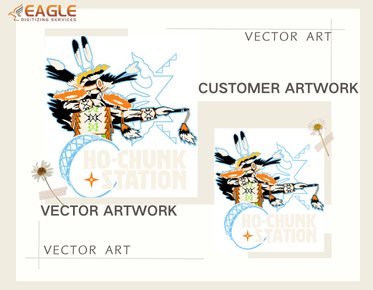Master the Water-Soluble Pen Method for Perfect Embroidery
In the world of embroidery,
precision and clarity are essential. Whether you’re an experienced stitcher or
a beginner, having the right tools can make all the difference in achieving
flawless results. One such tool that has revolutionized the embroidery process is the water-soluble pen. This
simple yet effective method allows embroiderers to transfer intricate designs
onto fabric with ease, saving time and eliminating the guesswork. By using a
water-soluble pen, you can enjoy crisp, visible lines that disappear with a
touch of water, leaving only your beautiful stitching behind.
Why the Water-Soluble Pen Method is a Game Changer for Embroiderers
Traditional
design transfer methods can be time-consuming, messy, and often leave unwanted
marks behind. Water-soluble pens change the game by offering a clean, precise,
and easy alternative. These pens create lines that vanish once you wash or
dampen the fabric, giving you a perfectly clean slate to work on. No more
worrying about faded pencil marks or trying to remove stubborn chalk residue
from your fabric.
Preparing Your Fabric and Design for the Transfer
Why
Fabric Preparation Is Crucial for Success
Before you even
think about tracing your design, it’s important to prepare your fabric. If your
fabric is wrinkled, dirty, or improperly stabilized, it can affect the final
outcome of your embroidery. A smooth, clean surface is essential for accurate
transfers, and proper preparation will make your stitching process far more
enjoyable.
Pre-washing
and Ironing: Essential Steps Before You Begin
Pre-washing your
fabric removes any chemicals, sizing, or dirt that could interfere with the
transfer process. After washing, ironing the fabric ensures it’s free of
wrinkles, providing a smooth surface for your design. A wrinkled fabric can
distort your lines, making it difficult to achieve precision when tracing.
How
to Stabilize Your Fabric for Smooth Transfers
Fabric
stabilization is another key element to successful transfers. Depending on the
type of fabric you're using, you may need to apply a stabilizer to keep it taut
and smooth during the embroidery process. This extra step will prevent the
fabric from shifting while you trace and stitch, ensuring your design stays
accurate and clean.
Designing and Printing Your Embroidery Pattern
How
to Transfer Your Design from Paper to Fabric
Once your fabric
is ready, it's time to transfer your design. The simplest way is to print your
pattern on regular paper, and then carefully trace over it onto your fabric
using a water-soluble pen. For more detailed designs, you can use a lightbox or
tracing paper to help guide the transfer.
The
Best Ways to Print Designs for Tracing
To ensure
accuracy when transferring, it’s helpful to print your design in the correct
size and scale. Many embroiderers use design software to adjust the size and
fit of their pattern, ensuring it fits perfectly onto the fabric. Once you’ve
printed your design, you can use a lightbox or window to shine light through
the paper, making it easier to trace the pattern directly onto your fabric.
Using
Lightboxes or Tracing Paper to Enhance Your Design
A lightbox is a
great tool for transferring designs, as it provides even lighting that makes
tracing lines more visible. Simply place your printeddesign on top of the lightbox, and your fabric on top of the design.
This method is especially helpful for intricate patterns that require fine
detail.
How to Use Water-Soluble Pens for Precise Tracing
Step-by-Step
Guide to Tracing Your Design with a Water-Soluble Pen
Begin by securing
your fabric in place and placing your printed design underneath it. With your
water-soluble pen in hand, carefully trace the outline of your design. Move
slowly and steadily, ensuring that each line is crisp and clear. If you’re
working with a more complex design, break it down into manageable sections,
focusing on one part at a time.
How to Avoid Mistakes While Tracing on Fabric
To avoid
mistakes, take your time and double-check your design before you begin tracing.
It’s also helpful to keep your hand steady to prevent shaking or smudging. If
you make a mistake, don’t worry—most water-soluble pens can be wiped away with
a damp cloth or cotton swab.
Tips
for Maintaining Smooth, Even Lines
Consistency is
key when tracing your design. Make sure to apply even pressure to the pen, and
try not to rush. For smooth, consistent lines, it can be helpful to practice
scrap fabric before tackling your main project.
Positioning Your Design on Fabric for Accuracy
How
to Properly Center Your Design on the Fabric
Before you start
tracing, ensure that your design is perfectly centered on your fabric. Use a
ruler or measuring tape to find the center of your fabric and mark it lightly
with a pencil. Align your design with these marks to guarantee that it’s
positioned accurately.
Using
Grids or Templates to Align Your Design
For larger or
more complex designs, using a grid or template can help ensure precision. You
can draw a grid on your fabric or use pre-made templates that overlay your
design to guide your tracing.
Techniques
for Tracing Curved or Irregular Designs
Curved or
irregular shapes can be tricky, but they’re no problem when you approach them
carefully. Break the design down into smaller sections, and trace each curve
with light, fluid motions. For more complex shapes, consider using a flexible
ruler to help guide the lines.
How to Ensure Your Traced Lines Stay Visible
The
Best Tracing Tips for Dark or Light Fabrics
When working with
dark or light fabrics, visibility can be an issue. On darker fabrics, choose a
pen with light-colored ink, such as white or yellow. On light-colored fabrics,
opt for darker pen colors like blue or black for maximum contrast.
How
to Deal with Faint or Inconsistent Lines
If your lines
appear faint or inconsistent, you can darken them by retracing with a slightly
firmer hand or switching to a different pen. Ensure the fabric is taut and
flat, as wrinkles can distort the lines and make them harder to see.
Keeping
the Pen Lines Bold and Clear During Tracing
If you’re finding
that your pen marks are fading too quickly or aren’t bold enough, it’s a good
idea to adjust the pressure you’re applying. A light hand may not leave enough
ink, while pressing too hard can cause smudging. Experiment to find the perfect
balance for crisp, bold lines.
How to Test Before You Trace: Avoiding Common Mistakes
Why
You Should Test on Scrap Fabric First
Before committing
your design to your final fabric, it’s crucial to test on a scrap piece of
fabric first. This allows you to see how well the pen works with your fabric
and ensure the ink visibility is clear. Testing will also help you determine
how much pressure to apply while tracing.
Checking
Pen Visibility and Accuracy on Test Fabric
After testing on
scrap fabric, check the visibility of the pen marks. If the ink is too faint or
difficult to see, consider switching to a different color or type of pen. The
marks should be bold enough for you to trace accurately but light enough to
disappear when washed.
How
to Adjust Pen Pressure for Clean Lines
Adjusting your
pen pressure is key to maintaining consistent lines. Apply just enough pressure
to make the ink visible, but not so much that the fabric gets soaked or the
lines become jagged. Practice on scrap fabric until you feel confident in your
technique.
Working with Multiple Colors and Layers
How
to Use Water-Soluble Pens for Multi-Color Designs
For multi-color
designs, you can use different pens to outline each section of your design in
the appropriate color. Water-soluble pens are perfect for this, as they won’t
interfere with one another when washed. Just be sure to allow the ink to dry
before adding additional colors to prevent smudging.
Layering
Different Design Elements with Ease
Layering elements
in your design is easy with water-soluble pens. Trace each component
separately, starting with the background elements and building up to the more
detailed features. This technique will help you create clean, well-defined
layers without losing accuracy.
Managing
Color Changes in Complex Patterns
When working with
complex patterns that involve multiple color changes, keep track of the order
in which you plan to stitch. Using different colored pens for each section can
help you stay organized and avoid confusion while stitching.
How to Deal with Fading or Smudging During Tracing
How
to Avoid Smudging Your Design Before You Stitch
To avoid smudging
your traced lines before stitching, avoid resting your hand on the fabric while
tracing. Use a handkerchief or scrap piece of fabric to rest your hand on,
ensuring the ink doesn’t smudge onto other parts of the design.
Fixing
Mistakes Without Ruining Your Fabric
If you make a
mistake while tracing, simply use a damp cloth to erase the pen marks. If the
mistake is caught too late, don’t worry—lightly rinsing the fabric can usually
remove any trace of the ink. It’s important to act quickly to avoid permanent
marks.
How
to Ensure the Design Doesn’t Fade While Stitching
Once you’ve
traced your design, make sure to avoid getting the fabric wet during the
stitching process. While water-soluble pens are designed to fade after washing,
prolonged exposure to water during stitching can cause premature fading. Work
carefully to avoid smudging.
Cleaning Up After Tracing: Preparing for Embroidery
How
to Let Your Pen Marks Dry Before Stitching
Allow your traced
lines to dry completely before beginning your embroidery. This ensures the ink
doesn’t smear or smudge while you’re stitching. If necessary, you can use a
hairdryer in a cool setting to speed up the drying process.
Ensuring
Your Design Stays in Place During Embroidery
Once your design
is traced, make sure the fabric is securely in place. Use embroidery hoops or clamps to hold the fabric taut,
ensuring your design remains steady throughout the stitching process.
What
to Do If You Make a Mistake After Tracing
If you realize you made a mistake after tracing, there’s no need to panic. Simply use a damp cloth to remove the ink and try again. Make sure the fabric is dry before re-tracing the design.
How to Remove Water-Soluble Ink After Stitching
The
Best Methods for Washing Away the Ink
Once your
embroidery is complete, removing the water-soluble ink is a breeze. Wash the
fabric with cold water to rinse away the ink completely. Avoid using hot water,
as this may cause the ink to set prematurely.
How
to Ensure No Marks Are Left on Your Finished Piece
To ensure no
marks are left behind, wash the fabric thoroughly and let it dry naturally. If
any faint traces remain, give it another rinse or gently dab with a wet cloth
until completely removed.
Quick
Tips for Preserving Your Fabric’s Quality
After removing
the ink, always follow proper care instructions for your fabric to keep it in
pristine condition. Avoid wringing or twisting the fabric to prevent distortion
of the design or fabric quality.
Water-soluble pens have become an indispensable tool for embroiderers, offering precision, ease, and cleanliness in transferring designs. Whether you're creating detailed patterns or bold statements, these pens make the process easier, more efficient, and far more enjoyable. With proper care and usage, a water-soluble pen can transform your embroidery projects, ensuring flawless results every time.
 Embroidery Digitizing.png)


